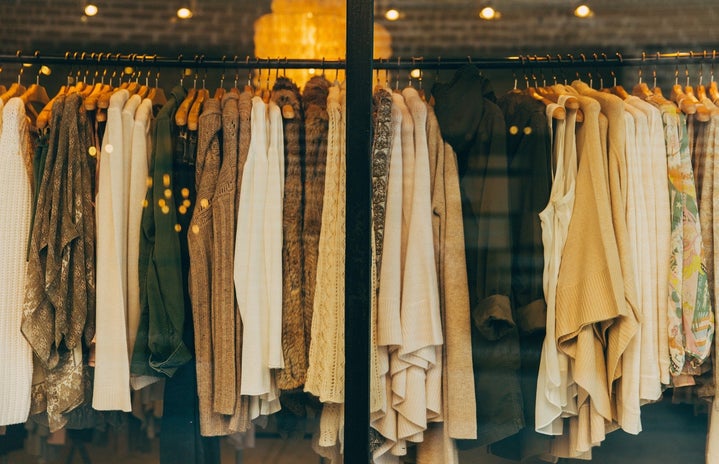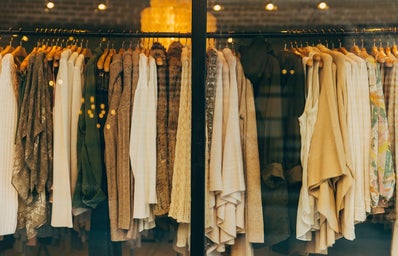According to an article by Business Insider, consumers in 2014 were buying 60% more clothes than in 2000 but keeping the items for half as long. Additionally, 85% of clothes end up in landfills each year. The amount of waste created by the fast fashion industry is immense.
In the past few years, many people have become aware of their impact on the world through fast fashion and are making an effort to change it. However, for many people, it is not so easy to shop at thrift stores or sustainable brands.
Let’s talk about thrifting and buying used clothes first. When you walk into most thrift or second-hand stores, the size markers only go up to an XL or XXL. Sure, there may be a few larger sizes mixed in there but it is incredibly limited. The last time I was at Goodwill, I took a moment to look at the difference between the number of items in the medium section and the XL section. The mediums took up two full racks while the combined XL and XXL section took up less than one.
Related: 7 Body-Positive Influencers to Add to Your Feed ASAP
Shopping gets much more difficult the bigger your size is. Kristin Chirico from Buzzfeed has a wonderful series called “The Empty Suitcase Show” where she travels to various destinations without any clothes and attempts to find both a day and a night look at non-chain stores. In the latest season, she decided to go to only thrift and resale shops. In episode one, Kristin looked into five popular shopping centers in Seattle consisting of a total of 101 stores that sold women’s clothing. Out of those 101 stores, she found only six stores that regularly carry a size 20 (Kristin’s size) or above. Three of the five shopping centers did not have a single store that carried above a size 20 on a regular basis.
“Something that I think is important to note here as well, is if I’m above, like a 24, we can’t make this show at all because the options for size 24 clothing items that are sold in stores, drops precipitously from there,” noted Chirico in the Seattle episode.
There are plenty of shops out there that use sustainable fabrics and ethical practices but the sizes are often incredibly limited. Sam Rosewell (aka @fattyboomtatty on Instagram), a plus-size influencer and blogger, told BBC that she feels left behind by sustainable fashion.
“You don’t have enough choice and you end up wearing fast fashion. It’s cheap, mass-produced brands that you end up going to. I see new shops opening that are using ethical fabrics, organic cotton, and still, there are no plus sizes. I feel like we’re forgotten,” said Rosewell in the interview, “I want to be conscious of not contributing to fast fashion because of how wasteful it is, but it’s either that or I run around naked.”
Representation matters. People of all shapes and sizes want to do their part and stop contributing so much to the fast fashion industry but it just isn’t as easy as it is for straight-size people. Don’t shame others for their inability to stop contributing to fast fashion. Realize that you are in a place of privilege to be able to do so.



